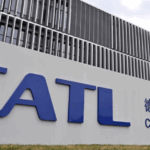Singapore’s Autonomous Vehicle Push: Punggol Leads the Way
Singapore is set to make a significant leap in public transportation with the deployment of self-driving shuttles in Punggol by the start of the fourth quarter of 2025. This initiative marks the city-state’s most ambitious move yet to integrate autonomous vehicles (AVs) into its public transport network, aiming to enhance connectivity, reduce commute times, and address manpower challenges. Acting Transport Minister Jeffrey Siow announced the plan during a working visit to Guangzhou, China, underscoring Singapore’s intent to be at the forefront of AV adoption alongside global cities like San Francisco and Guangzhou.
- Singapore’s Autonomous Vehicle Push: Punggol Leads the Way
- Why Punggol? The Rationale Behind the Pilot Location
- How Will the Self-Driving Shuttles Work?
- Safety First: Singapore’s Cautious Approach
- Technology and Industry Partners: Who’s Involved?
- Broader AV Rollout: What’s Next After Punggol?
- Addressing Manpower and Economic Challenges
- Impact on Jobs and Workforce Transformation
- International Context: Learning from Global Leaders
- Challenges and Considerations: Public Acceptance and Business Viability
- In Summary
The Punggol pilot is the first step in a broader five-year strategy to roll out self-driving vehicles across Singapore, particularly in Housing Board (HDB) estates where residents often face longer journeys to key amenities and transport hubs. The Ministry of Transport (MOT) is currently finalizing details regarding vehicle types, routes, and fare structures, with input from residents and ongoing discussions with both local and international AV operators, including US-based Waymo and China’s WeRide.
Why Punggol? The Rationale Behind the Pilot Location
Punggol was chosen as the launchpad for Singapore’s AV ambitions due to its status as a relatively new estate with mature travel patterns and robust infrastructure. According to Senior Minister of State for Transport Sun Xueling, resident feedback played a crucial role in shaping the initial routes. Many in Punggol West expressed a need for better access to amenities in Punggol East, such as the wet market and polyclinic, while those in the east sought more convenient connections to transport hubs like the bus interchange and MRT station.
This resident-centric approach is designed to ensure that the new AV services address real mobility gaps, particularly the “first and last mile” challenge—helping people get from their homes to major transport nodes more efficiently. The pilot will focus on short, fixed routes within the estate, supplementing existing bus, taxi, and private-hire services.
How Will the Self-Driving Shuttles Work?
In the initial phase, the autonomous shuttles will operate on fixed routes within Punggol, providing point-to-point services between residential clusters and key amenities. The vehicles are expected to be multi-purpose vehicles (MPVs) or minibuses, chosen for their flexibility and ability to operate on existing infrastructure. These shuttles will be clearly marked with bright colors for easy identification and will travel at manageable speeds to ensure safety.
Deployment will be gradual and cautious. The first stage will see the vehicles running without passengers, allowing residents and other road users to become accustomed to their presence. Once public comfort and confidence are established, the shuttles will begin carrying passengers, initially with a safety officer on board. The safety officer’s role is to monitor operations and intervene if necessary, providing an additional layer of reassurance. In later stages, as the technology and public trust mature, the safety officer may be removed, moving closer to fully autonomous operations.
Safety First: Singapore’s Cautious Approach
Singapore’s approach to AV deployment is notably cautious compared to cities like Guangzhou and San Francisco, where robotaxis and autonomous buses are already part of daily life. The Land Transport Authority (LTA) and MOT have emphasized that safety is paramount. All AVs must undergo rigorous testing and certification, with initial deployments limited to fixed routes and controlled environments.
This stepwise strategy is informed by lessons from international counterparts and local trials. Since 2015, Singapore has conducted AV pilots in non-residential areas such as one-north business park, university campuses, and Resorts World Sentosa. These trials have provided valuable data on technical feasibility, operational challenges, and public acceptance.
Experts note that Singapore’s dense urban environment, high traffic density, and diverse mix of road users present unique challenges for AVs. As Daniel Chow, principal at consulting firm Arthur D Little Southeast Asia, observes:
“Singapore is not the first to deploy autonomous vehicles, but it may be one of the first to get it right.”
This deliberate pace is designed to build public confidence, ensure robust safety standards, and allow for the gradual integration of AVs into the broader transport ecosystem.
Technology and Industry Partners: Who’s Involved?
The Punggol pilot is part of a larger ecosystem involving both local and international players. The MOT is in talks with established public transport operators in Singapore, some of whom have partnerships with Chinese AV firms. Notably, US-based Waymo and China’s WeRide are among the companies being considered for collaboration.
WeRide, for example, has already launched an autonomous shuttle service at Resorts World Sentosa and operates similar services in over 30 cities worldwide. Its Robobus, a Level 4 autonomous minibus, has demonstrated safe and reliable operations in complex urban environments, including Guangzhou and several European cities. The company’s experience in handling real-world challenges—such as night operations, inclement weather, and mixed traffic—positions it as a strong contender for Singapore’s AV ambitions.
Other industry players, such as ComfortDelGro (Singapore’s largest taxi operator) and Pony.ai, are also actively involved in AV trials, both locally and overseas. The competitive landscape for Singapore’s AV deployment is robust, with multiple consortia bidding for pilot projects, including those led by Malaysian operator Causeway Link and Singapore-based start-ups like MooVita.
Broader AV Rollout: What’s Next After Punggol?
If the Punggol pilot proves successful, the government plans to expand AV services to other estates, with Tengah identified as the next likely location in 2026. Tengah is being developed as a “car-lite” town with a strong emphasis on public transport, making it an ideal testbed for autonomous mobility solutions.
In parallel, the LTA is preparing to launch a separate pilot for autonomous public buses from mid-2026. This initiative will see six driverless buses, each with at least 16 seats, operating on selected routes in Marina Bay, Shenton Way, and one-north. These routes were chosen for their simplicity and existing AV test-bed status. The buses will initially have safety operators on board, with the possibility of transitioning to remote supervision after demonstrating operational reliability.
The phased approach allows authorities to assess technical feasibility, operational requirements, and public acceptance before scaling up. Depending on the outcomes, the LTA may procure up to 14 additional autonomous buses and expand the pilot to more routes.
Addressing Manpower and Economic Challenges
One of the key motivations behind Singapore’s AV push is to address manpower constraints in the transport sector. Recruiting and training new bus drivers is time-consuming and costly, and expanding traditional bus services requires significant investment in depots and infrastructure. Autonomous shuttles and buses offer a way to run services more frequently and efficiently, especially during off-peak hours or in areas underserved by conventional transport.
Acting Transport Minister Jeffrey Siow highlights the potential for AVs to transform the “first and last mile” of commutes, making public transport more attractive and reducing reliance on private cars. This aligns with Singapore’s broader goals of achieving a “45-minute city” (where most peak-hour journeys take less than 45 minutes) and “20-minute towns” (where local trips can be made in 20 minutes or less).
Fares for the new AV services are expected to fall between current public transport and taxi/ride-hailing prices, targeting trips that are less attractive to taxi or private-hire drivers, especially during peak hours. The government may provide short-term funding to help operators scale up, with the aim of achieving commercial sustainability in the long run.
Impact on Jobs and Workforce Transformation
The transition to autonomous vehicles inevitably raises questions about the future of jobs in the transport sector. Minister Siow and union leaders have emphasized that while the role of professional drivers may change, new opportunities will emerge in areas such as fleet management, remote operations, maintenance, and customer service.
During the initial stages, safety officers—often retrained bus drivers—will play a crucial role in monitoring AV operations. As the technology matures, some of these roles may evolve into remote supervision or technical support positions. The government, in partnership with the National Trades Union Congress (NTUC), is committed to supporting workers through reskilling and upskilling programs, ensuring a fair and smooth transition.
NTUC Secretary-General Ng Chee Meng underscores the importance of balancing innovation with workforce progress:
“Not only will AVs allow for quicker introduction of new bus routes, the technology could potentially also support workers working in areas currently underserved by public transport. Nonetheless, at NTUC we believe innovation must go hand-in-hand with productivity gains and progress for our workforce.”
International Context: Learning from Global Leaders
Singapore’s AV strategy is informed by developments in leading cities such as Guangzhou and San Francisco, where commercial robotaxi and autonomous bus services are already operational. During their visit to Guangzhou, Singaporean officials observed WeRide’s Level 4 robobus service, which operates fare-charging routes in the city’s downtown core. These international experiences provide valuable insights into technical challenges, regulatory frameworks, and public acceptance.
Despite rapid progress overseas, Singapore’s authorities remain cautious, prioritizing safety and public trust. The city-state’s dense urban environment, high compliance with traffic rules, and lack of “greenfield” spaces for unrestricted testing necessitate a more measured rollout. Experts argue that if AV technology can succeed in Singapore’s complex setting, it can be adapted to most urban environments worldwide.
Challenges and Considerations: Public Acceptance and Business Viability
While the technical maturity of AVs has advanced significantly, public acceptance remains a key hurdle. Surveys and expert opinions suggest that trust in autonomous driving technologies has not kept pace with their capabilities, partly due to high-profile incidents and misconceptions about safety. Building confidence through transparent communication, rigorous safety standards, and gradual integration is essential.
Business viability is another challenge. AV buses and shuttles are more expensive to purchase and maintain than conventional vehicles, and achieving profitability may take years. The success of the Punggol pilot and subsequent expansions will depend on careful cost management, supportive policies, and the development of a robust ecosystem involving operators, technology providers, and regulators.
In Summary
- Singapore will deploy self-driving shuttles in Punggol by the fourth quarter of 2025, marking a major step in its autonomous vehicle strategy.
- The pilot aims to improve connectivity within HDB estates, reduce commute times, and address manpower shortages in public transport.
- Deployment will be gradual, with a strong emphasis on safety, public acceptance, and workforce transition.
- If successful, the initiative will expand to other estates like Tengah and run in parallel with autonomous bus pilots starting in mid-2026.
- Singapore’s cautious, stepwise approach is designed to ensure robust safety standards and public trust, learning from international leaders while adapting to local challenges.
- The transition to AVs will create new job opportunities in fleet management, remote operations, and technical support, with government and union support for reskilling.
- Public acceptance and business viability remain key challenges, but Singapore’s experience could set a benchmark for AV integration in dense urban environments worldwide.












